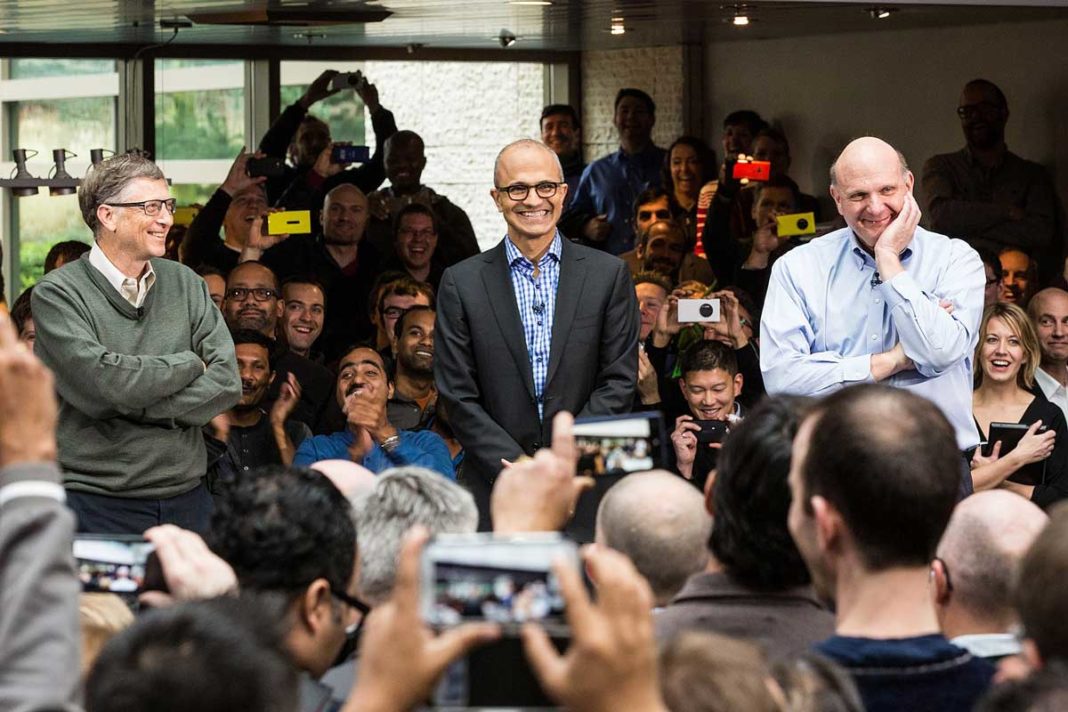Estimated reading time: 5 minutes
In February 2014 Satya Nadella became CEO of Microsoft. The company at that point of time was considered a tech dinosaur and had the reputation of being a toxic working environment. Its founder Bill Gates had by all accounts been a difficult boss, reprimanding employees and his successor, Steve Ballmer continued the competitive business tactics that partners disliked. At the time when Nadella took over, Microsoft had lost the race for smartphones and the platform where its technology was developed for, the desktop, was moving on to the cloud.
Satya Nadella
Nadella’s first chosen task was to change the culture of Microsoft. Nadella, born in India and a Buddhist, wanted to transform the company into one that stood for curiosity and “learn it all’, rather than the one he inherited that was mostly based on “know it all” kind of mental attitude.
He was determined that the company would lose its old and aggressive behaviors and be a more inviting and accepting environment, perhaps like you would find at a jackpot casino. He never showed anger or raised his voice towards employees or executives, and it was no longer acceptable for executives to shout and become aggressive in meetings. It was important to Nadella that everyone work towards creating a more comfortable work environment.
Following the changes in culture and the many strategic changes that took place after Nadella took charge, Microsoft’s Market capitalization went up from around $300 billion to over $2.5 trillion today which makes it one of the two most valuable companies on the planet.
Sundar Pichai
When Sundar Pichai joined Google, he also inherited the cultural problems that were rife within the company. Google had developed a ‘permissive workplace culture’, in which sexual relationships between executives and other staff members was causing lot of internal tension. With his quiet and gentle manner, Pichai was able to manoeuvre the company into a more relaxed and calmer environment. He accomplished a huge amount.
There are a number of other Indian CEO’s Shantanu for instance, Narayen, (Adobe) and Jayshree Ullal, (Arista Networks) who have also attained huge successes. Going beyond the tech field, other India born CEO’s worth mentioning who have also really made a difference is Indra Nooyi (PepsiCo) and Ajay Banga (Mastercard).
The Way to the Top
How is it that these Indian have been able to reach such senior positions? What advantages did these Indians have that enabled them to become leaders in these tech companies and others.
Research carried out by Professor Anna Lee Saxenian at Berkeley, University of California in 1999 found that immigrants made up one third of the scientific and engineering staff in Silicon Valley. According to the same research Indian CEOs were in charge of 7% of Silicon Valley’s high-tech firms. In 2006 the research was updated and the new data showed that startups founded by immigrants had risen to 52.4%, and Indian born executives were the founders of 15.5% of tech firms in the Valley even though they were just 6% of the working population of Silicon Valley.
The research findings brought out that, of the immigrant entrepreneurs in the tech and engineering sectors, 96% had completed a bachelor’s degree while 74% had a master’s degree or a Ph.D. Included in that group, the Indian entrepreneurs had received their education in a whole range of different universities. The Indian Institutes of Technology interestingly accounted for just 15% of the founders of these companies.
Culture, it seems, is as important as Education
Education is no doubt important and definitely gave Indians an advantage on the way up. However, this does not answer the question as to why companies like Microsoft, Google, Twitter and IBM have chosen individuals who were born outside of the country instead of equally qualified American born technologists. It could be that the answer has something to do with cultural values, the way in which somebody has been brought up and the challenges they have struggled with.
In India, people have to learn to be resilient. It is a struggle to survive. India has a vast population, more than a billion people. It is rife with corruption, has a weak infrastructure and there are few opportunities. Those who get ahead have had to overcome many obstacles and make the most of what little they had. In India you need to think outside of the box, work around issues that an unjust society has dealt you. Resourcefulness, creativity and entrepreneurship are part and parcel of life in India.
Most importantly, family values and the support of family members is crucial. There is very little in the way of a social security net available. Therefore, the family is central, giving all kinds of support and aid to those who need it.
India, like many other countries, is an amalgamation of various ethnic, racial, gender and caste differences but Indians learn that in order to succeed they must overlook or be flexible when confronting these biases or differences. India has six major religions and there are 22 recognized regional languages. In each particular region of the country, they have their own customs, attitudes and beliefs and these are recognized and accepted, especially in the business world.
Another, aspect that is impactful comes from the humility that occurs when one moves to a foreign land. Any person moving to a new country and leaving social status behind in their former home country and having to begin again from the bottom will feel humbled. But many valuable lessons will be learned when you are forced to begin once again at the bottom of the ladder and work your way up to success.
These are all valuable qualities that are appreciated by companies when looking for new blood. It is these qualities that that will enable a CEO to really make a difference and to transform the prevailing culture in a company.
It is these traits and qualities that have really helped and given these Indian CEOs the advantage over their American counterparts. It could well be why Twitter’s board unanimously supported Jack Dorsey’s recommendation to select Parag Agrawal to replace him.
Twitter most definitely needs an overhaul, in terms of a cultural transformation. Twitter has been rightly criticized for its toxic work culture and the abuses that take place on Twitter’s platform, not to mention the fact that Jack Dorsey was CEO on a part time basis. Twitter’s predecessor, Dick Costolo, was also not open to criticism so change was not possible. Now with an Indian CEO and the values that they hold, change is more likely. It is for this reason that American top technology companies are bringing them on board.
Also Read:
- Gas Detectors: A Comprehensive Guide

- Slot Gacor: The Ultimate Guide to Winning Big

- Bound to Burst – The Agnipath Bubble

- The Chinese Naming Game Continues Unabated In Arunachal Pradesh, India

- New LAC In Ladakh

- The Development of Online Gacor Slot Innovation

~ News4masses is now also on Google news
~ If you want to contribute an article / story, please get in touch at: news4masses[at]gmail[dot]com



















